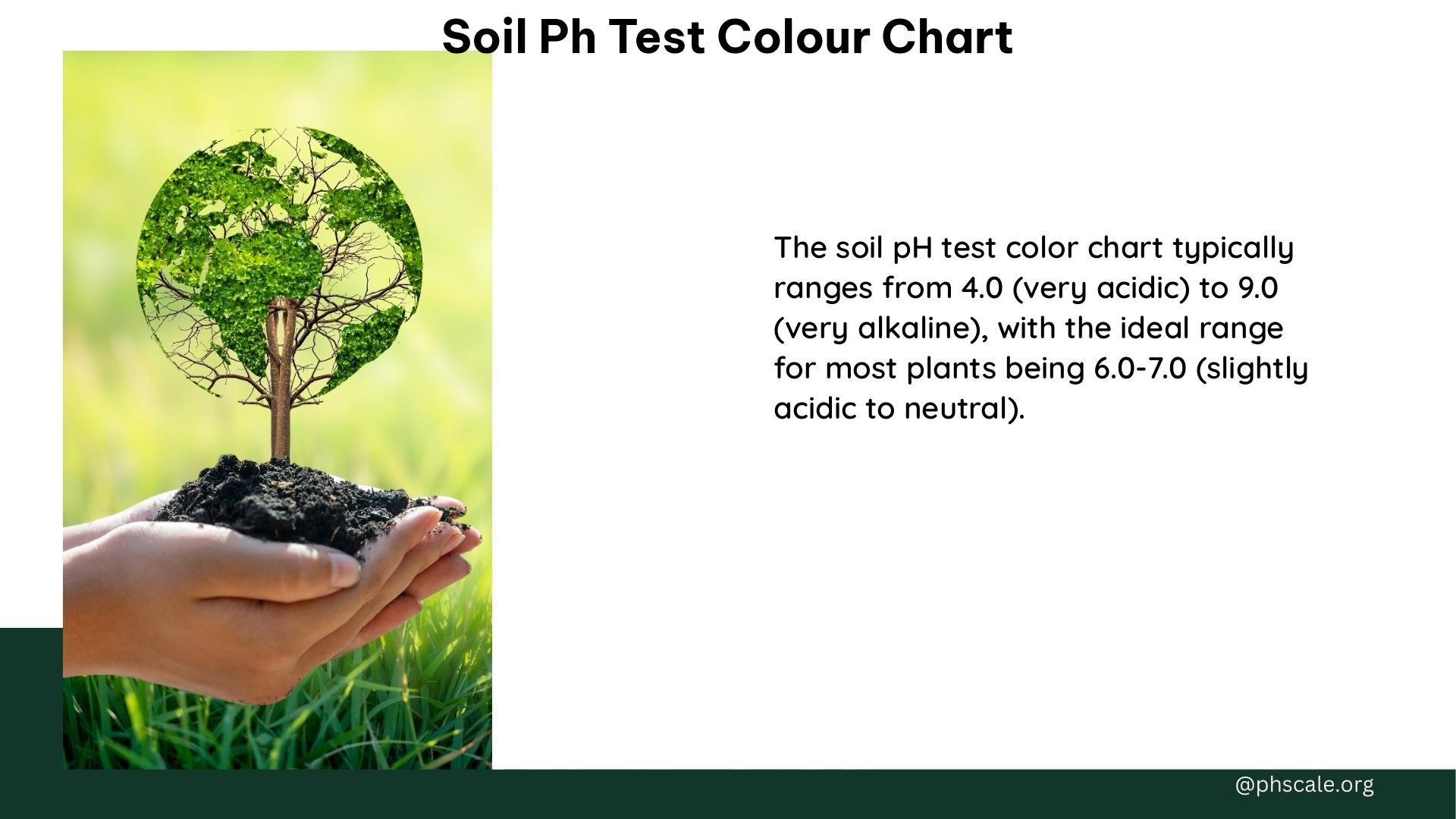Soil pH is a crucial factor in determining the health and fertility of your soil. A soil pH test colour chart is a simple and effective way to determine the pH level of your soil. This guide will walk you through understanding and interpreting the results of a soil pH test using a colour chart.
Understanding Soil pH
Soil pH is measured on a scale of 0 to 14, with 7 being neutral. A pH below 7 is acidic, while a pH above 7 is alkaline. Different plants thrive in different pH ranges, so it is essential to know the pH of your soil to choose the right plants and take corrective measures if necessary.
How to Use a Soil pH Test Colour Chart

- Collect and Prepare the Soil Sample: Collect a soil sample from different spots in your yard, mix it thoroughly, and remove any debris. Then, prepare a 1:1 ratio of soil and water, and let it settle for 10-15 minutes.
- Measure pH: Insert a small portion of pH paper into the liquid above the soil and allow the liquid to move up into the paper. Remove and let the color develop for 60 seconds.
- Read the Colour Chart: Compare the color of the pH paper to the colour chart provided with the test kit. The chart will indicate the pH level of your soil.
Interpreting the Results
| pH Range | Soil Condition | Recommended Action |
|---|---|---|
| 3.0-5.0 | Very Acid Soil | Add lime to raise the pH to above 5.0 |
| 5.1-6.0 | Acid Soil | Ideal for ericaceous plants like rhododendrons and heathers. Add lime if other plants are grown. |
| 6.1-7.0 | Moderately Acid Soil | Ideal for a wide range of plants. No action is usually necessary. |
| 7.1-8.0 | Alkaline Soil | Phosphorus availability decreases, and iron and manganese become less available. Add sulphur or iron sulphate to reduce pH. |
Common Contaminants and Chemicals
- Free Calcium Carbonate: Present in limestone or chalk, it can affect pH levels. A quick test is to add vinegar to a soil sample; if it fizzes, free calcium carbonate is present.
- Acidifying Agents: Substances like sulphur, iron sulphate, and acidifying residues (e.g., pine needles, sawdust) can help reduce soil pH.
- Lime: Added to increase soil pH and make it more alkaline.
Home Remedies and Solutions
- Add Organic Matter: Incorporating compost or other organic matter can help balance soil pH and make it more resistant to changes.
- Use Acidifying or Alkalizing Agents: Depending on the pH level, add lime to increase pH or sulphur to decrease pH.
- Monitor and Adjust: Regularly test your soil pH and adjust accordingly to maintain a healthy balance.
References
- RHS Gardening. (n.d.). Soil: understanding pH and testing soil. Retrieved from https://www.rhs.org.uk/soil-composts-mulches/ph-and-testing-soil
- Soil Science Society of America. (n.d.). Soil pH. Retrieved from https://www.soils4teachers.org/files/s4t/sssa-activity-soil-ph.pdf
- LaMotte Company. (n.d.). Soil pH Test Kit – 5024. Retrieved from https://lamotte.com/soil-ph-test-kit-color-chart-5024.
